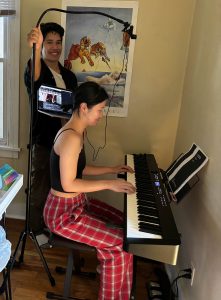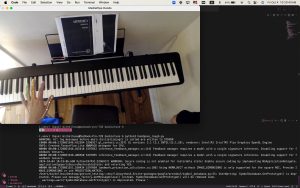General update:
- We gave the design report presentation. This involved considering some use case requirements and making design decisions regarding our camera setup. We also fleshed out the testing for each of the different components.
- We had a couple of practice sessions over the weekend to strengthen Danny’s presentation skills.
- We obtained the parts for our stand. We did a rough setup to see if the stand was able to capture the full keyboard. Our stand was tall enough that it was able to capture the entire keyboard. We plan to build a connector between the gooseneck and the stand before we meet with Professor Dueck’s students again on Wednesday.
- We ran through the basic setup tutorial for Vitis AI on the Kria KV260. We were able to set up a model and detect their example image. More details can be found in Danny’s status report. We also ran through the Vitis AI workflow tutorial for quantizing and compiling a model on the FPGA. More details can be found in Jessie’s Status report.
- We looked into how to implement kinematics on the FPGA. More details can be found in Jessie’s Status report.
- We worked on printing out tension vs not tension CV pipeline—see Shaye’s status report
- We tested kinematics in CV pipeline—see Shaye’s status report
- We further looked into the different webapp examples that are found in Django.
Risks:
- Weight distribution of the camera stand being off-center leading to the stand tipping over.
- If this happens, we plan to add a counterweight.
- FPGA not working—many complications in general
- Order RPI to work with over break for contingency.
- May order RPI ai kit if we end up switching over 100%.
Changes to schedule/ design:
- No changes were made, we’re still on track of our schedule.
Stand setup:


Screenshot of “rough setup” we did
